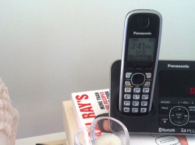When putting together your resume (whether it is your first version or fifteenth), there are tons of things to consider. Hours and hours can be spent tailoring a resume to get it into “perfect” shape. As a recruiter, I can’t even estimate how many resumes I’ve screened through – over 10,000 in a year for sure… and while there are endless ways to update, tweak, and edit your resume, there are a few major things to remember when going through this exercise.
1. Keep it simple. Keep it clear. Don’t use filler!
You know your experiences like the back of your hand – but have you ever noticed that when you’ve told a friend or family member about a day at your job, they reply with a blank stare or a “I have no idea what you are talking about”? That is because they don’t. While certain tasks & buzzwords may make total sense in your head, don’t assume that others know exactly what you are trying to convey. When considering bullet points on your resume, try to explain things you’ve done in a simple, clear, and concise manner.
Your goal should never be to fill a page with words. Think about the person looking at your resume. They make be browsing through a stack of 100 and moving quickly. You want the main point you are trying to get a cross to really “stick”. Even after the initial screen, when a hiring manager is looking at your resume before an interview, they will also appreciate the lack of “filler”. The hiring process is long and cumbersome, and the less time people have to spend to know you are a perfect fit, the better! So no filler for the sake of filling a page.
2. Keep it relevant
Your past experiences likely do not fit into a neat little box that ties in a bow. The reality of most roles is that they are very dynamic, multi-facetted, and extremely random. When you are describing your experiences on your resume, you don’t need to capture everything you’ve done in a job or internship. Take a step back and try to (mentally) sort the different things you’ve done into a few main buckets. You should have a bullet point for each of those buckets. Let’s take an example of a Marketing Intern. Those main buckets may be “event planning”, “contact organization & outreach”, and “social media management”. Though you might have made a few tweets (part of social media) or put together gift bags (part of event planning) there is no need to get that granular. A great way to write each bullet point and also fold in specifics (just a few) is using a formula like this: [the high-level task] + [including x, y, and z sub-tasks]. An example would be “Planned all summer events by organizing invite lists and managing event logistics”. Take what is most impressive and incorporate it and feel free to leave out the rest. In certain roles, you may want to direct someone to other things that highlight your skills (an online profile of your work for example). It is great to do this when it makes sense.
3. One size does not fit all!
Unless you are applying to only one (very specific) type of job at a bunch of companies (that are also very similar), I definitely suggest having a few different versions of your resume handy. For each role you’ve had you’ll probably only want 4-6 bullets but maybe there are actually 10 buckets of things you did in that role. For a generic version, I say go with the most impressive buckets. However, each time you are going to apply for a role, look at that job description and see what the tasks of that role are. Then mirror your resume and bullets about your experiences to those that are most relevant to the job. A great way to do this that does not require much effort is to make a list (right after you’ve completed an internship or job) of all of the things you’ve done. Each time you are creating a specific version of your resume you’ll be able to easily delete the less relevant bullets.
4. Be Honest
Trust me on this one. Don’t lie about anything you’ve done (or say you’ve done something you haven’t). At some point in the interview process you will interview with someone who really drilled into your resume and knows their stuff! A great interviewer will ask many probing/follow-up questions and if you claimed to know something you actually don’t, it’s an immediate knock out of the process. Also (and this is obvious) don’t lie about dates worked, whether or not you are still working, and other basics. They are generally verified through a background check before you are hired and if you are caught, your offer could be taken away.
5. Format & PDF
Unless you are applying to a super creative role (design, photography, web design), you’re resume does not need to look fancy. It needs to be legible and clear. Most resumes are “chewed up” by the system you are applying through and will actually convert it to plain text anyway. Keep it to one page, don’t go crazy with fonts, and when in doubt, pdf. The beauty of a pdf is that no matter what your resume is opened with (mac, pc, web-based program) it will look 100% the same. Sometimes when applying through a system, it won’t allow .pdf resumes so keep a .doc and a .pdf version handy. When you are uploading a resume to a system make sure you review what it looks like (in plain text) after uploading. The last thing you want is for it to be jumbled and show certain formatting code. You’ll know if/when this happens – don’t just hit next.
This will be first of many, many posts we will write on the topic of resume writing & editing. Have specific questions you want answered about resume writing? Email us at questions@prepary.com and we’ll answer you soon!





